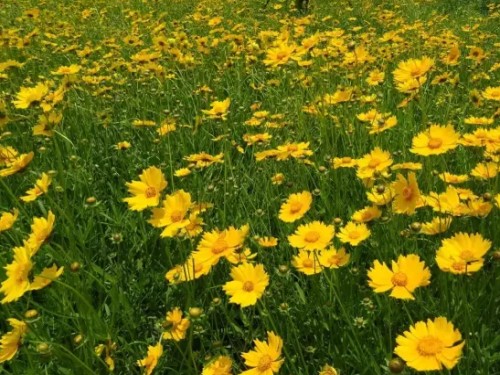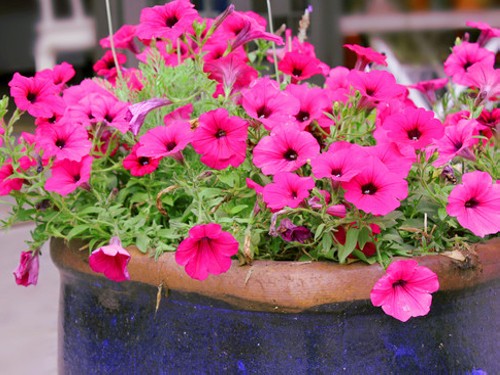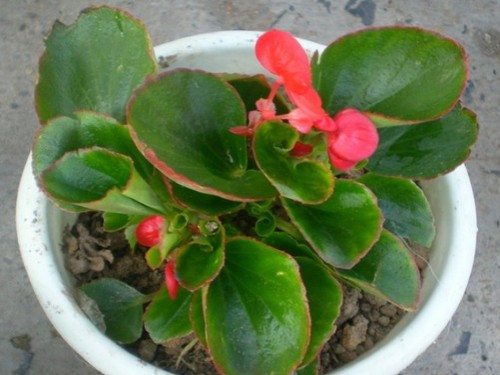Sowing method of Chrysanthemum morifolium
Chrysanthemum morifolium is native to America and is widely cultivated in China. Chrysanthemum morifolium can be used as an ornamental and beautification material, and it is often used in the beautification design of flower border, sloping land, courtyard and street garden. At the same time, Chrysanthemum morifolium can also be used as cut flowers or ground cover, can also be used for highway greening, has the function of soil consolidation and slope protection, and the cost is low.

Although it is considered by some people to be an alien invasive species, we can optimize the application of Chrysanthemum morifolium and make reasonable "control" use. For example, by making use of its natural ability to adapt to the wild, it is often applied to poor soil in the wild (there is almost no plant community or where plants cannot survive); if it is applied in the city, it will reduce the application of garden urban landscape. instead, it is cultivated and domesticated into potted flowers to decorate the indoor landscape, which can not only meet everyone's ornamental needs, but also control its seed reproduction in limited space. Today, I will briefly introduce how to plant the seeds of Chrysanthemum morifolium.
Chrysanthemum morifolium is a perennial perennial root herb of Compositae with golden flowers and florescence from June to September. Originally from the south of Mei Lean. Like warm, moist and sunny environment, cold-resistant, drought-resistant, lax on the soil, resistant to clean and thin soil, but grow well in loose, moderately fertile and well-drained loam. Have the ability of self-broadcasting and reproduction.
Chrysanthemum morifolium can be sowed and propagated in spring and autumn. The suitable temperature for germination is 15 ℃ and 20 min. Sowing and propagation in the north is generally carried out in August, and it can also be broadcast in the open field at the end of April in spring, bloom from July to August, and bloom one after another to the middle of October. Seed particles are small, sowing can be used to sow, the seeds mixed with sand, evenly scattered on the pre-made seedbed, the seedbed should be about 15 cm higher than the surrounding ground, in order to facilitate drainage. The nursery bed should not be too wide and should be operated conveniently.
Watering should be uniform, and if possible, it is best to connect the sprinkler or feather spray can with a water pipe. After watering, cover it with a straw curtain. In the future, we should often observe the humidity of the seedbed, so that the seedbed remains moist, do not make the seedbed too dry and too wet. The seeds germinated 21 days after sowing, and the grass curtain could be opened after emergence. After the seedlings had grown true leaves, nitrogen fertilizer was applied once. Chrysanthemum morifolium is resistant to drought and waterlogging and should be drained in time after rain. During the growing period, 2 Mel nitrogen fertilizer was applied for 3 times, and phosphorus and potash fertilizer was used when topdressing nitrogen fertilizer.
Golden rooster chrysanthemum, like most other plants, is planted in spring and harvested in autumn, so it is sown in early spring. As the chrysanthemum needs to keep the soil moist during sowing, it can not be subjected to large temperature changes, dry and wet, or too dry and too wet. And the golden chicken chrysanthemum can only thrive under the condition of ventilation, so the sowing season of the golden chicken chrysanthemum is the best in spring. Golden rooster chrysanthemum is very easy to cultivate and can often grow on its own. Sowing or ramet propagation is often used in production, of course, cutting propagation can also be carried out in summer, but it is necessary to control the temperature.
If you want to make the big flower Golden Chrysanthemum blossom more, you can pick off the residual flowers after flowering, and fertilize once from July to August, so that the National Day will blossom and flourish. Golden rooster chrysanthemum has luxuriant branches and leaves in fertile soil, but its flowering decreases, so in order to achieve a good effect of flowering, fertilization should be moderate and not too much. After seedling planting, the soil should be loosened before the new branches grow, and the soil should be loosened to breathe after rain, and weeds should be weeded once a week in the rainy season. The plant height 6cm picks the heart once, the branch 10cm picks the second heart, removes the willow bud in time.
Time: 2019-06-10 Click:
- Prev

Breeding methods of petunia
Morning glory belongs to convolvulus family plants, origin in tropical asia, southern china, it has an alias morning glory, belongs to an annual vine wound herbaceous flowers. Morning glory is a poisonous plant, stem, leaves, flowers contain toxicity, especially the seeds of the strongest toxicity
- Next

Cuttage method of Malus asiatica
Begonia is the most common and cultivated species of Begonia. Beautiful posture, delicate and bright leaves, flowers into clusters, open all the year round, and slightly with fragrance, for indoor and outdoor decoration of one of the main pot flowers. People apply it to flower bed arrangement, the effect is excellent. With the emergence of some relatively heat-tolerant varieties
Related
- Fuxing push coffee new agricultural production and marketing class: lack of small-scale processing plants
- Jujube rice field leisure farm deep ploughing Yilan for five years to create a space for organic food and play
- Nongyu Farm-A trial of organic papaya for brave women with advanced technology
- Four points for attention in the prevention and control of diseases and insect pests of edible fungi
- How to add nutrient solution to Edible Fungi
- Is there any good way to control edible fungus mites?
- Open Inoculation Technology of Edible Fungi
- Is there any clever way to use fertilizer for edible fungus in winter?
- What agents are used to kill the pathogens of edible fungi in the mushroom shed?
- Rapid drying of Edible Fungi

